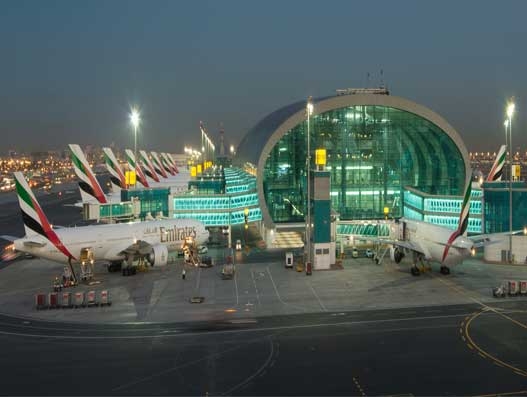
Cargo volume at Dubai International up by 3.5 percent in Q1 2017
<p style="text-align: justify;">Apr 25, 2017: Dubai International (DXB) has seen 3.5 percent increase in cargo volume in the first quarter of 2017, according to traffic results released by Dubai Airports. The airport has handled 636,479 tonnes this year from the 615,144 recorded during the same period last year.</p> <p style="text-align: justify;">This result was positively impacted […]

Apr 25, 2017: Dubai International (DXB) has seen 3.5 percent increase in cargo volume in the first quarter of 2017, according to traffic results released by Dubai Airports. The airport has handled 636,479 tonnes this year from the 615,144 recorded during the same period last year.
This result was positively impacted by an 8.4 percent boost in cargo volumes in March with 235,503 tonnes being handled compared to 217,202 tonnes in the same period last year.
Passenger traffic at the world’s number one airport for international passenger numbers, DXB climbed 7.4 percent during the first quarter of 2017 to 22,496,596 compared to 20,948,690 recorded during the same period last year.
The year to date totals follow March results which saw a 3.8 per cent increase in passenger numbers to 7,511,431 compared to 7,237,509 reported in March 2016. The more modest growth rate in March was due to the timing of the Easter holiday which fell during March in 2016 and during April in 2017. The number of passenger flights in March grew 1.0 percent to 34,634 compared to 34,303 last year while year-to-date flight numbers were up 0.5 percent to 100,638 compared to 100,116 recorded during the first quarter of 2016.
The average number of passengers per flight in the first three months of the year was 224, compared to 209 during the corresponding period in 2016, an increase of 6.8 per cent.
During the first three months of the year, Eastern Europe was the fastest expanding market in terms of percentage growth (33.3 percent) as the appreciation of the ruble against the US dollar over the past year has increased spending power in Dubai and spiked demand in the Russian market. Asia was the next fastest growing market (22.6 percent) which benefited from additional capacity provided by Emirates and flydubai in markets such as Thailand, China and the Philippines, followed by South America (22.2 percent).
Conversely, the impact of travel bans and electronic device restrictions is starting to be felt on North American traffic figures, which were down 4.3 percent during March of 2017 versus the same period last year. Year to date traffic to and from North America is up 2.5 percent.
India remained the top destination country during the first three months of the year with a total of 3,031,866 passengers, followed by the UK (1,618,334 passengers), Saudi Arabia (1,572,963) and Pakistan (1,166,642). London topped the list of destination cities during the period under review with 974,950 passengers, followed by Doha (797,729 passengers), Bangkok (633,496) and Mumbai (618,638).
Paul Griffiths, CEO of Dubai Airports, said, “While there are fluctuations in growth market-by-market the overall trend is quite positive as evidenced by the 7.4 percent increase in passenger numbers during the first quarter. That result keeps us well on track to meet our 2017 forecast of 89 million passengers.”

